Day two in Baalbek, and we are awakened after a night-long power cut. It turns out that in this part of Lebanon this disruption in daily life happens more often compared to Beirut. Back in the Lebanese capital we were told that regular blackouts were the result of the unwillingness of the Ministry of Finance to provide a budget for the Ministry of Energy – they’re probably from two opposing political forces which happen to form the current government. But that’s politics in Lebanon, and it’s not surprising that many Lebanese blame politicians for a lot of problems in their country. However, with the spectacular Roman ruins of Baalbek just across the road from our hotel, we’re not complaining.
After breakfast we leave our hotel and walk toward the same entrance gate to the ancient temple compound that we went to the previous afternoon, though the weather now is slightly hazy. Unusually for a Roman site, the history of Baalbek is not well-documented, leaving scholars to assemble pieces of the puzzle about this place over generations. Nevertheless the consensus is that Baalbek was once dedicated to the Semitic god Baal-Haddad (the name Baalbek means Baal or Lord of the Bekaa), who from the Greek perspective is comparative to the sun god Helios, after which this city in modern-day Lebanon was then named: Heliopolis. Over the time the god was also associated with Zeus Helioupolites, an epithet of Zeus. When the Romans conquered this land, they built a temple for their equivalent to Zeus: Jupiter.
The Roman Era in Baalbek began when Pompey occupied the Beqaa in 64 BC, with successive Roman emperors further promoting Romanization of the valley and the former Phoenician coastal cities including what is now Beirut. In 30 BC Augustus took control of the region, and upon realizing Baalbek’s strategic position as a religious center along an ancient trade route, in 16 BC he instructed the veterans of Roman legions in Beirut to settle in Baalbek. It was around this period of time that the construction of the Temple of Jupiter is believed to have started. What followed in the coming centuries was the expansion of the temple compound to eventually become the largest such example of religious architecture in the entire Roman world.
On our first day in Baalbek, we marveled at the remains of this great achievement, so spectacular I used up all of my three memory cards to take photos of this incredibly detailed and beautiful UNESCO World Heritage Site. This morning, we decide to take a slightly different route to explore the ruins: through the staircase leading to the propylaea (monumental gateway) to the Great Courtyard. To think that this is only a portion of what the grand staircase used to look like is mind-boggling, but really, anything within this magnificent compound would make one feel small and insignificant. We continue to the Hexagonal Courtyard, a feature not shared with other Roman temples, indicating an Oriental influence during the design stages of this temple. Facing this part of the structure is the Great Courtyard, containing the original altar of sacrifices which was preserved by the Romans. At the end of the courtyard is the Temple of Jupiter, which under the rule of Theodosius (a Roman emperor in the fifth century AD when Christianity had become the official religion of the empire) was partially torn down to build a basilica in the Great Courtyard dedicated to Saint Peter. It is also believed that some columns were transported to Constantinople to build the Hagia Sophia.
What remains of what was once a great temple are a few colossal standing columns, the grand staircase, and scattered stone blocks. However, one only needs to see what’s directly to its south to imagine the scale of the temple before it succumbed to plunder and earthquakes. The Temple of Bacchus was commissioned by Antonius Pius, the Roman emperor throughout the mid-second century AD, as an addition to the Temple of Jupiter. Despite being smaller than its predecessor, the Temple of Bacchus is still an enormous structure – it’s slightly bigger and more than twice as tall as the Parthenon in Athens. Climbing its steps makes me think of how it must have felt like for the locals when they entered this architectural marvel almost two thousand years ago to worship.
Carved underneath the lintel of the monumental doorway of the Temple of Bacchus are the symbols of Jupiter (an eagle with its wings outspread and its beak holding stalks of wheat), Mercury (a winged caduceus), and Venus (two cupids). Meanwhile, the ceiling of the temple’s peristyle is adorned with images of Pax (goddess of peace), Ceres (goddess of agriculture, grain crops, fertility and motherhood), Vulcan (god of fire, metalworking and the forge), Fortuna (goddess of luck), Diana (goddess of the hunt, wild animals and the Moon), Victoria (goddess of victory), Mars (god of war), as well as depictions of the abduction of Ganymede, Medusa and her hair of snakes, and Cleopatra stung by a snake.
However, it is Bacchus, the Roman god of the vine, grape-harvest, wine-making, wine, ritual madness, religious ecstasy and theater, that the temple is believed to have been dedicated to. This is attributed to the reliefs at two altars inside the temple where Bacchus is depicted as a child. It took many years and different emperors to finish the construction of the Temple of Bacchus, but as Christianity rose to prominence in the Roman empire in the fourth century AD, this temple would soon be abandoned. In 635, the Muslim army of the first Islamic caliphate conquered Baalbek. In subsequent decades and centuries, not only did different Muslim rulers control this former Roman city, including the Damascus-based Umayyads, Baghdad-based Abbasids, and Cairo-based Fatimids, but so did the Byzantines in the late 10th century.
In 1075, when Baalbek was ruled by the Isfahan-based Seljuks, its fortification wall was strengthened and the transformation of the former Roman temples into a citadel began, thanks to the enmity between the Muslim dynasty and the Crusaders. When the Levant (including Baalbek) changed hands and fell under the domination of the Ayyubids – a Kurdish Muslim dynasty – the local emir of Baalbek commissioned the construction of what is now called the Ayyubid South Tower at the left part of the grand staircase of the Temple of Bacchus which functioned as part of the citadel’s fortification, and later a palace under the Mamluks of Egypt. While facing the Crusaders on the western front, an unexpected adversary advanced from the Far East. In 1260 the Mongols invaded Syria and destroyed Baalbek, but in the same year the Mamluks managed to defeat them and retake the historic city.
Almost three centuries later, Baalbek fell to the Ottomans, and during their rule European tourists began visiting the Roman ruins, although it took several more centuries before modern scientific excavation was commenced by Kaiser Wilhelm II of Germany in 1901 following his visit to the ruins on his way to Jerusalem. Following the Ottomans’ defeat at the end of World War I, Turkey had to surrender its possessions in the Levant to France. It was during the European power’s mandate that periodical excavations continued, and subsequently since Lebanon’s independence all archaeological works have been carried out by the Lebanese Department of Antiquities. In spite of the civil war that had engulfed this small Middle Eastern country since the 1970s, the Roman ruins of Baalbek were inscribed as a UNESCO World Heritage Site in 1984, although the beginning of restoration work had to wait for a few more years when the war officially ended.
Today, in a time of relative peace and calm, Baalbek once again attracts visitors from all over the world to marvel at the ruins’ stunningly detailed carvings, imposing structures, and the majestic snow-capped backdrop on the horizon in both east and west. Most people go here as a day trip from Beirut, and this is even more apparent as we’re the only people standing inside the Temple of Bacchus this very morning on our second day in the Beqaa Valley. This sanctuary might have been dedicated to the Roman god of ritual madness and religious ecstasy, but at this tranquil moment neither of those things are on my mind. Only a deep admiration for the visionary architect, as well as the highly-skilled sculptors and engineers who made this architectural wonder possible.

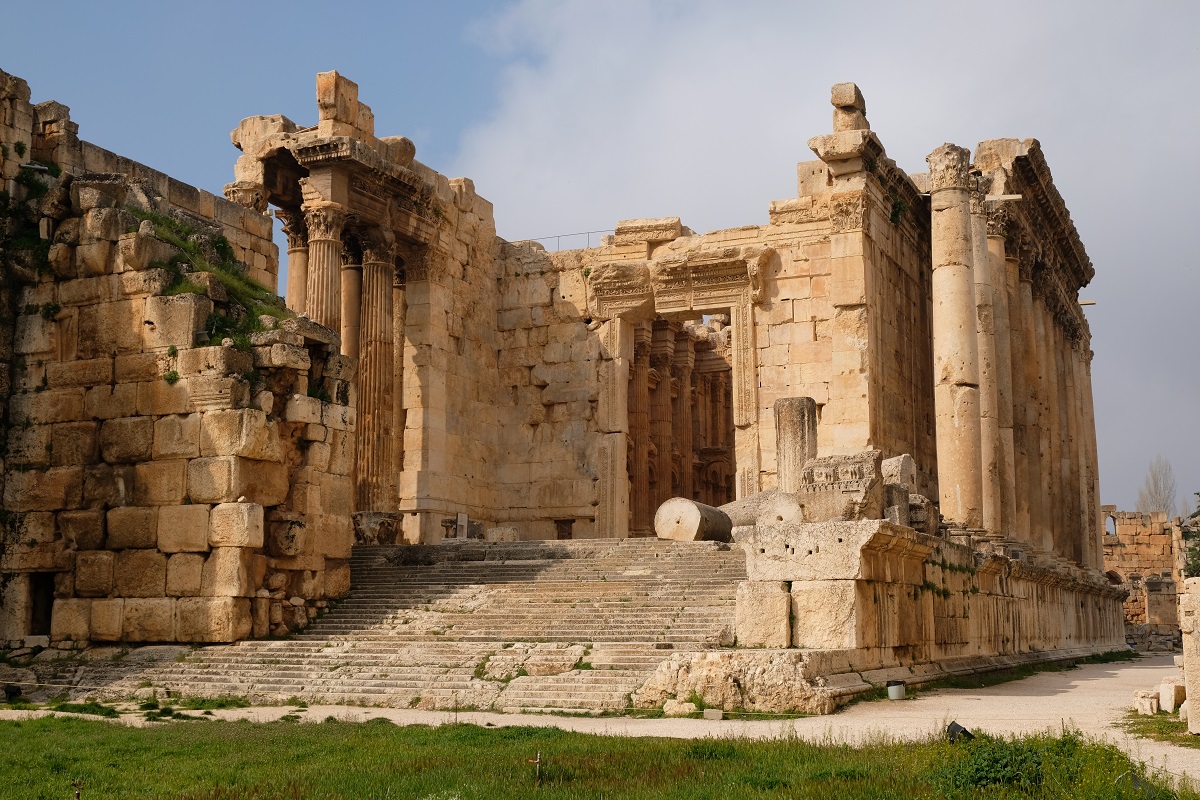


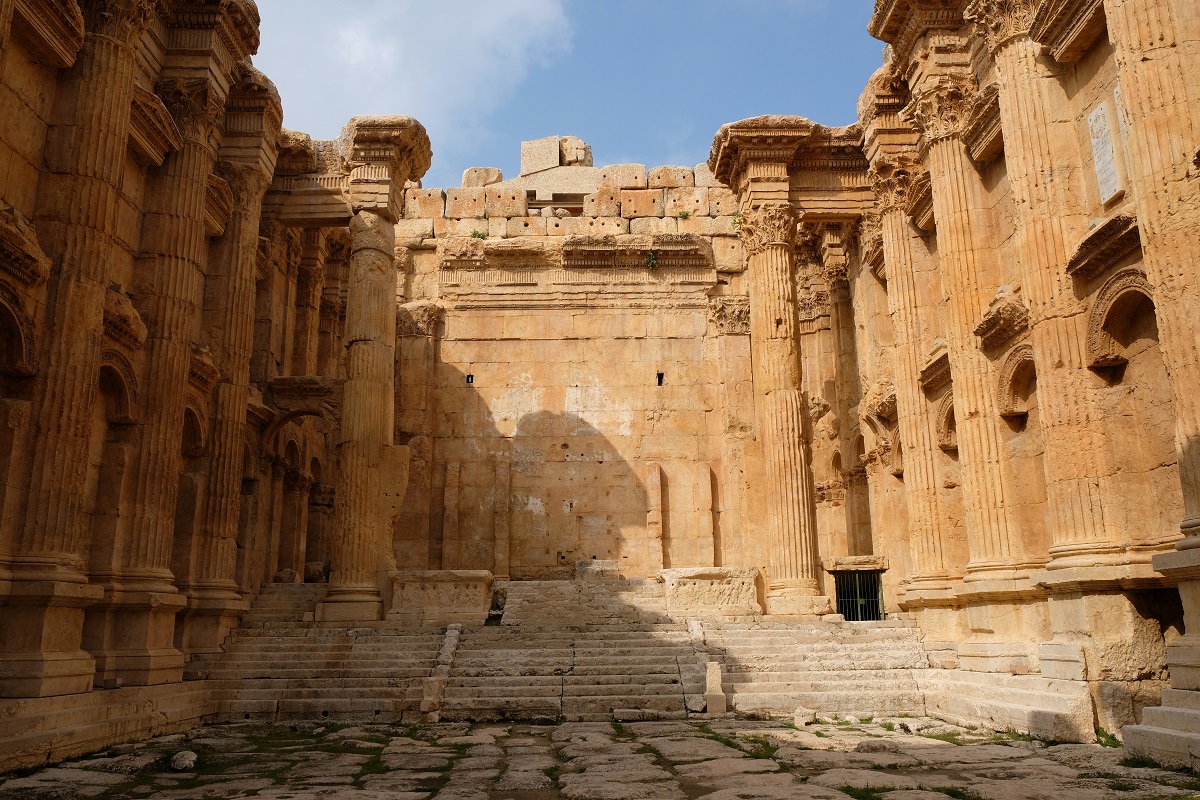
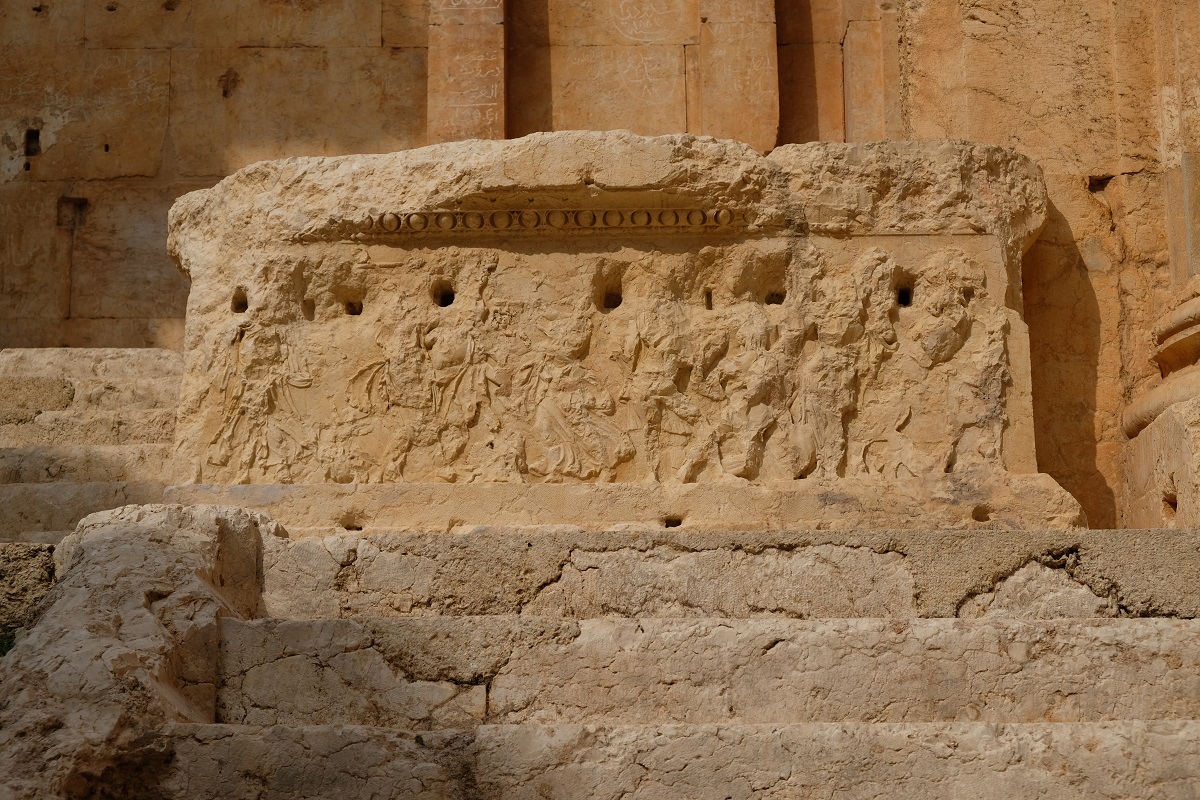

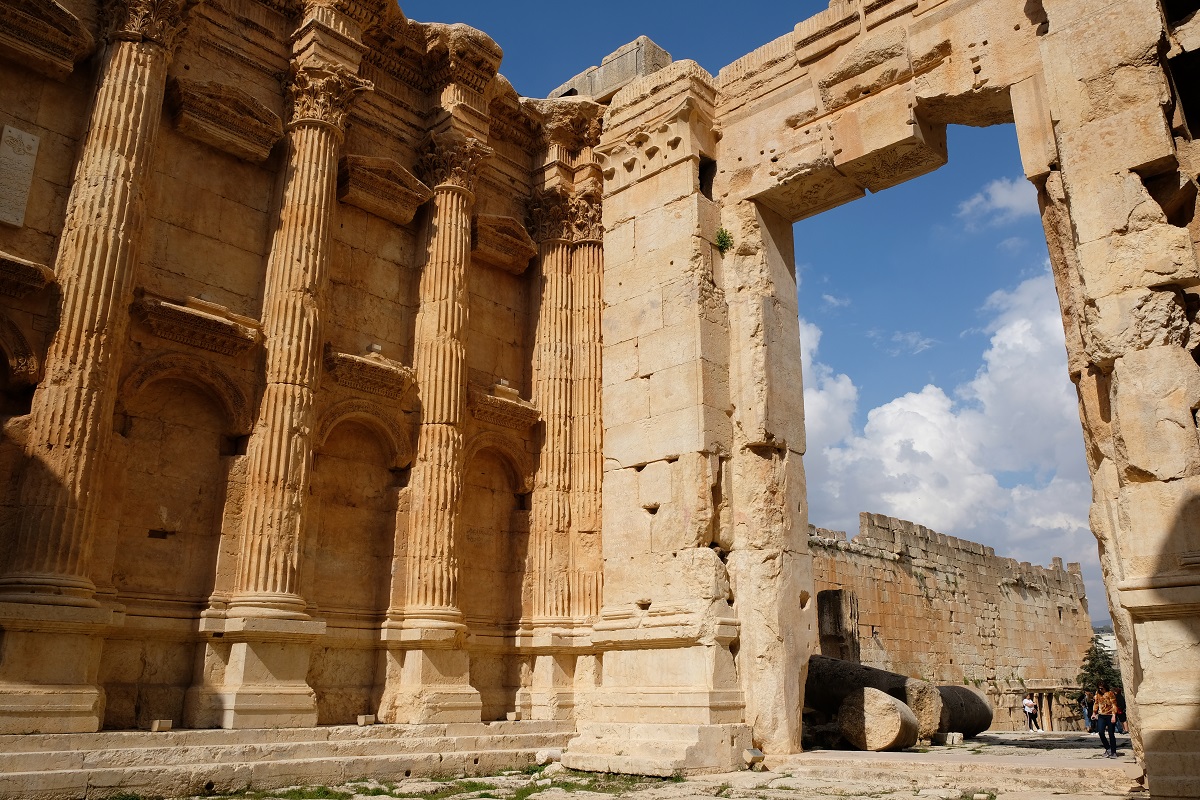
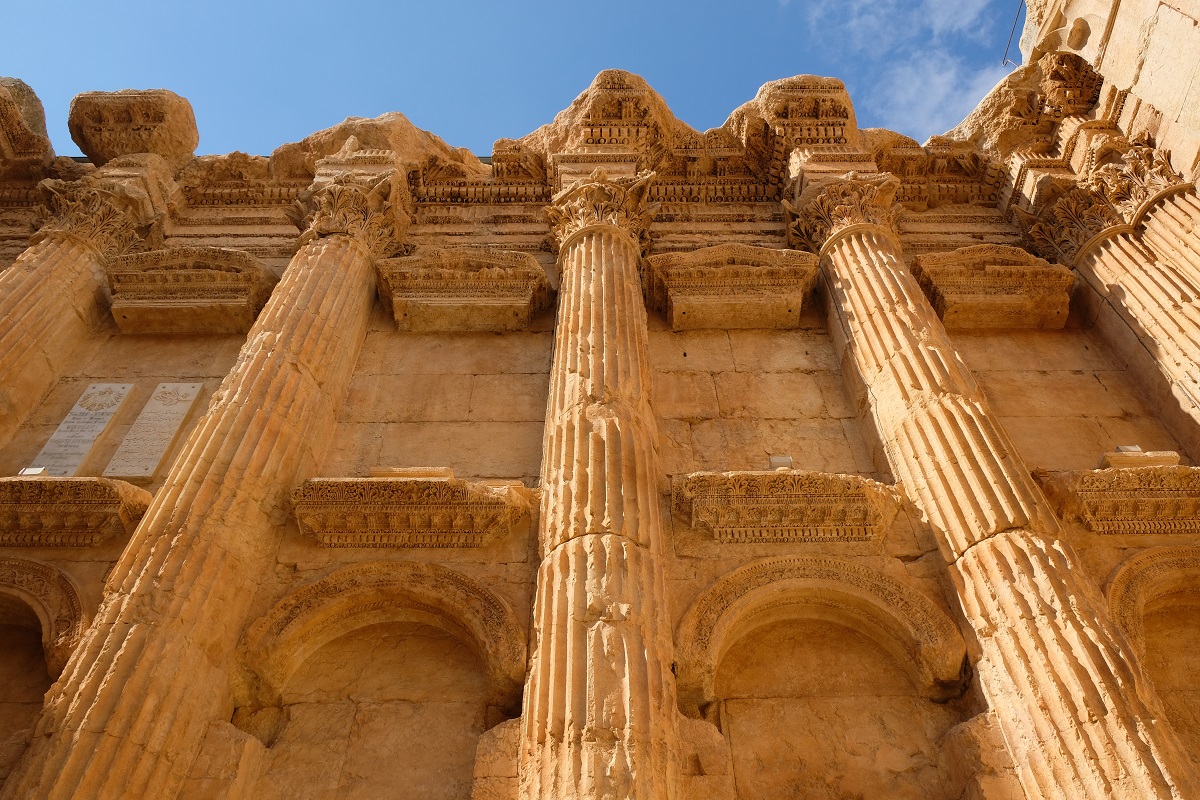
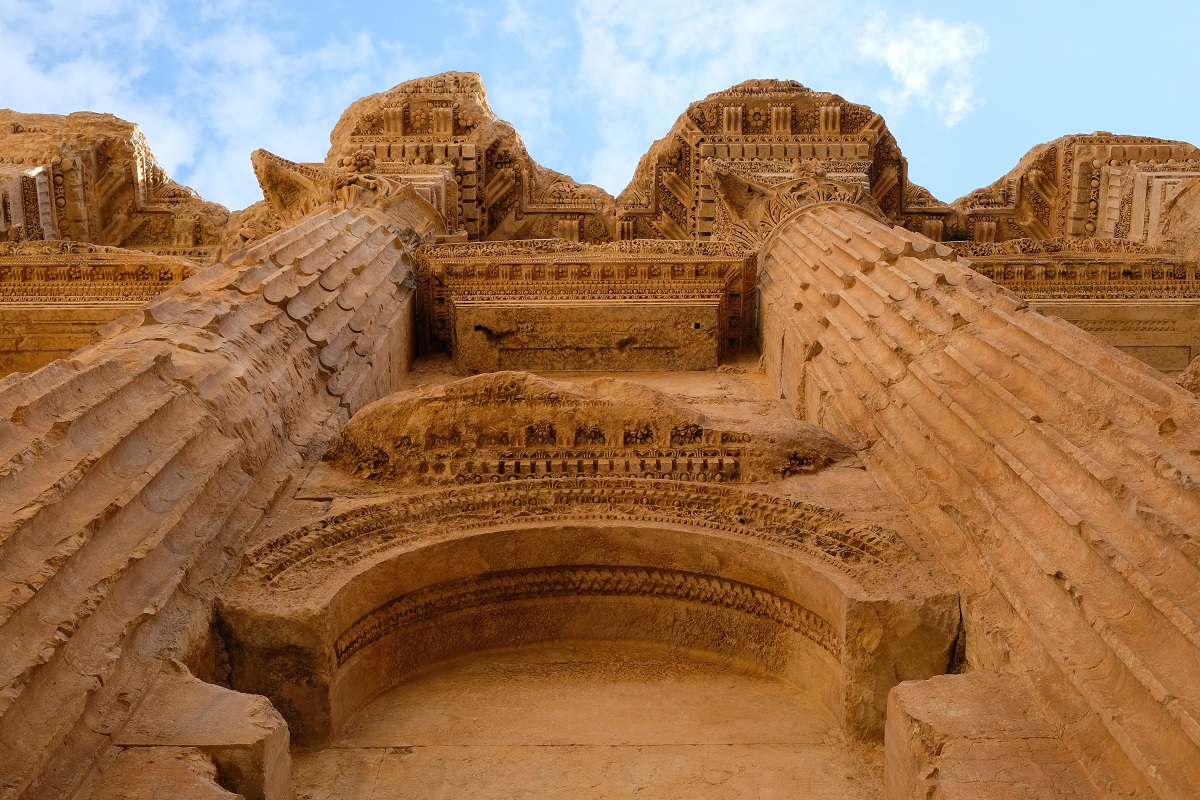
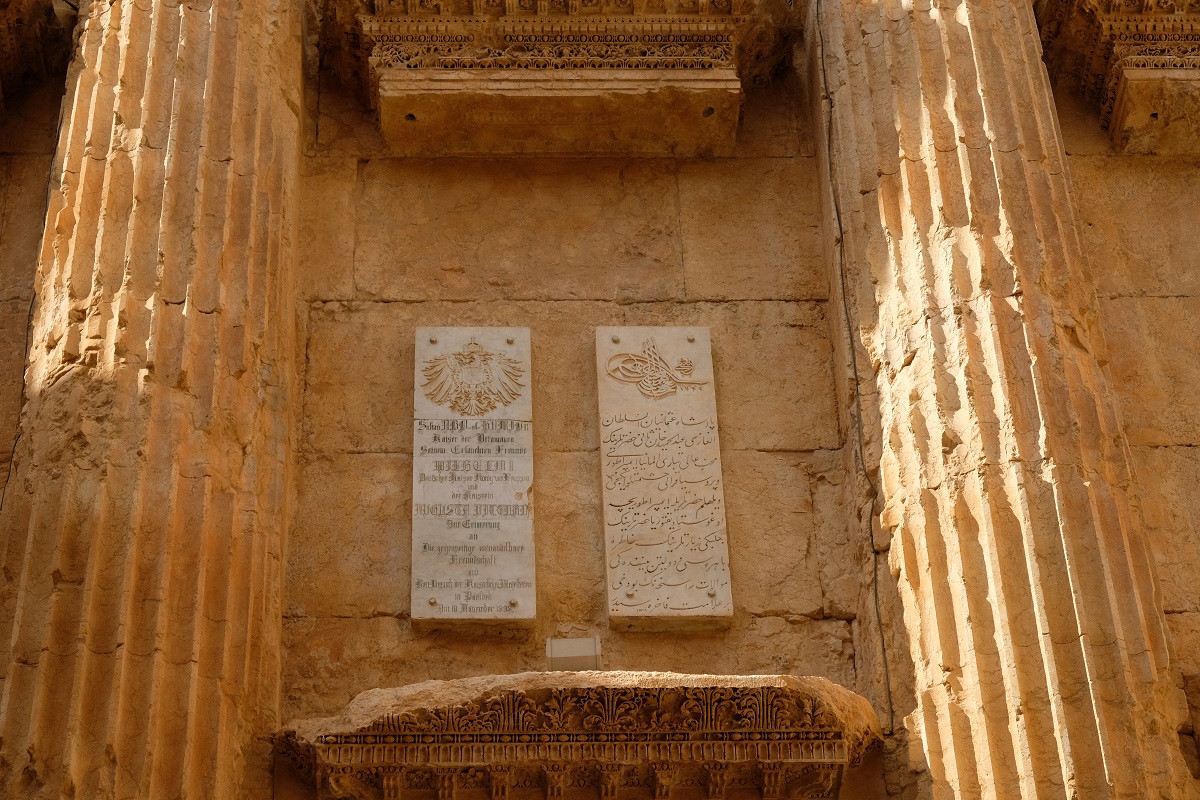
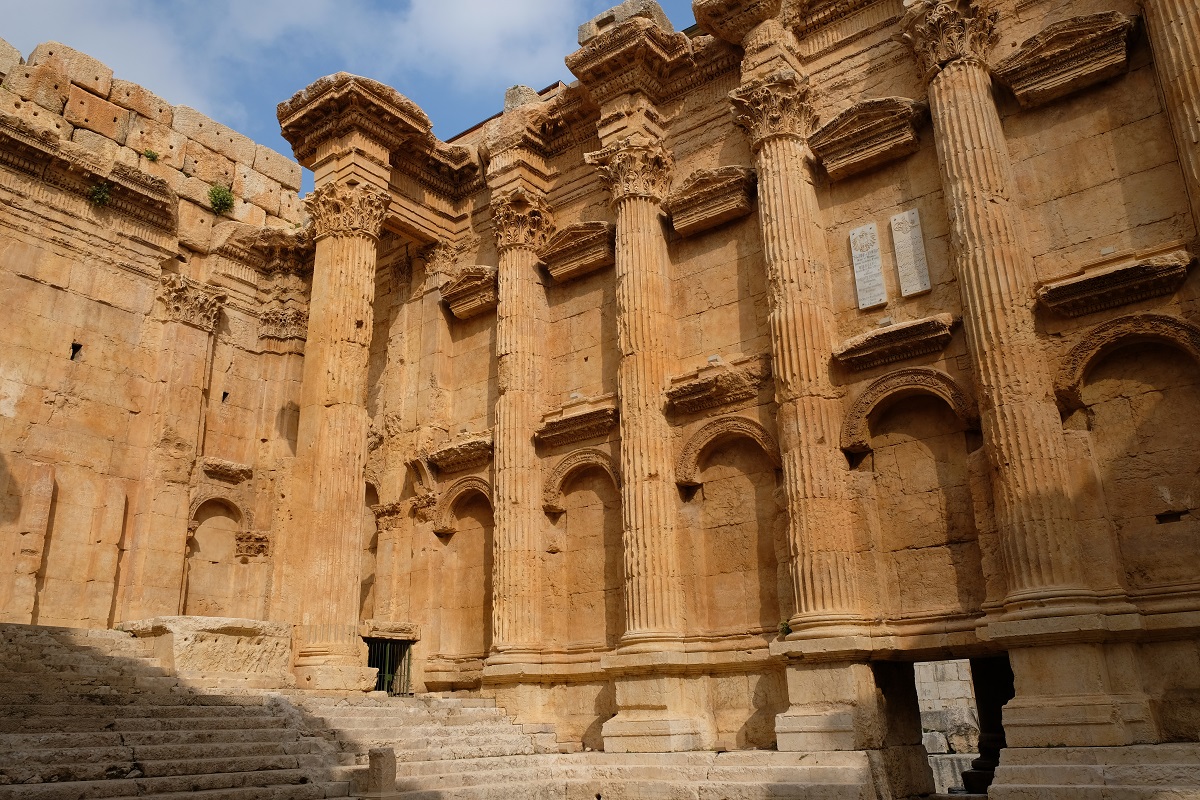
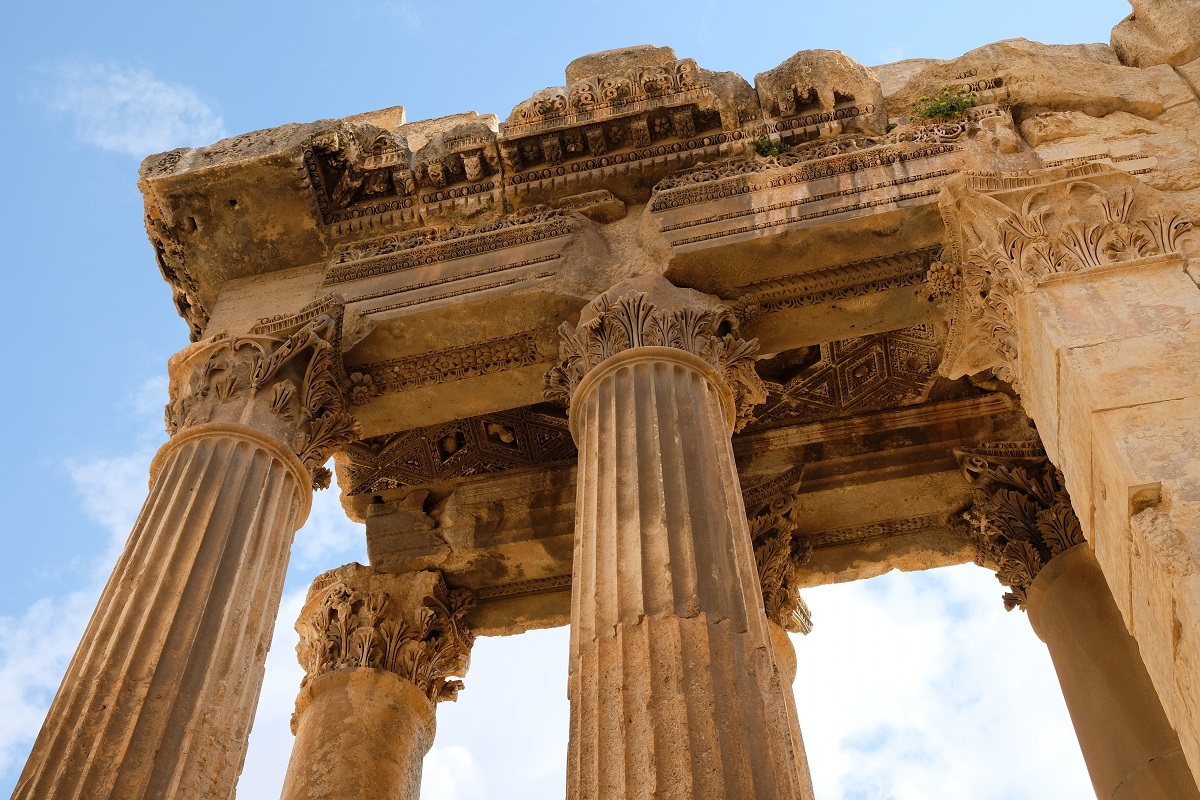
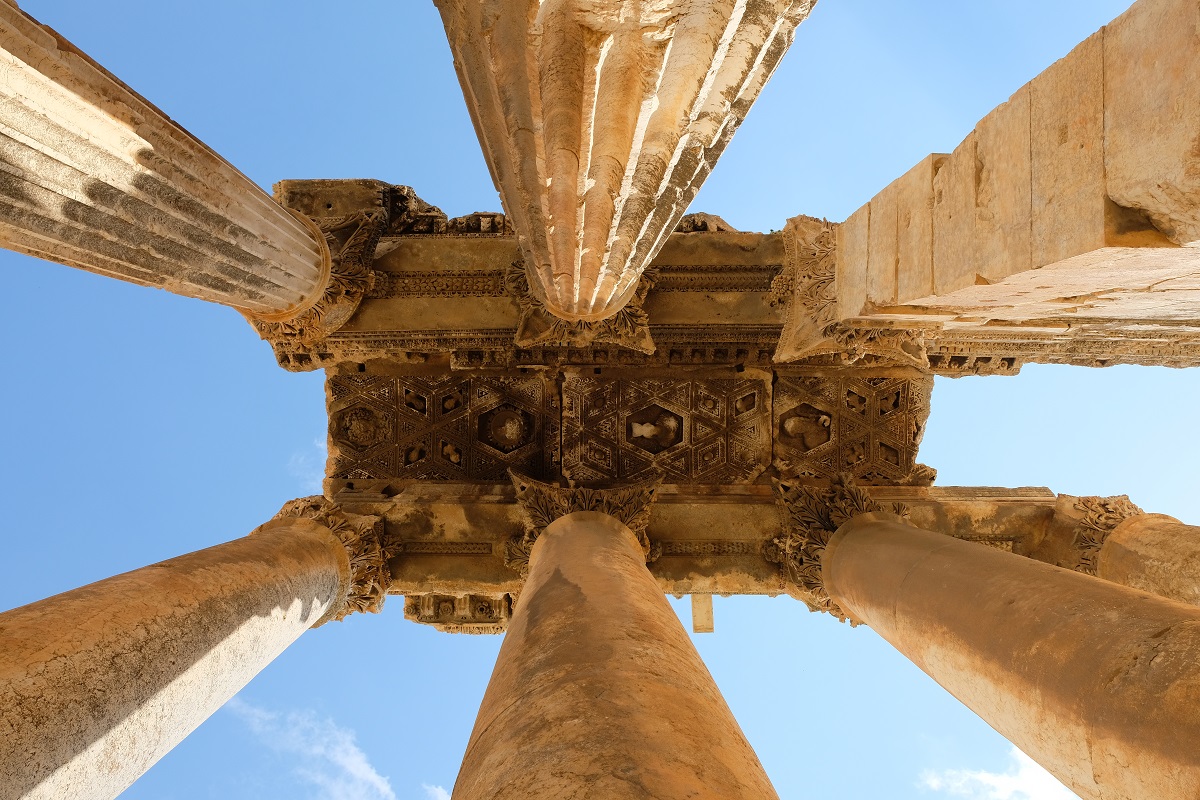
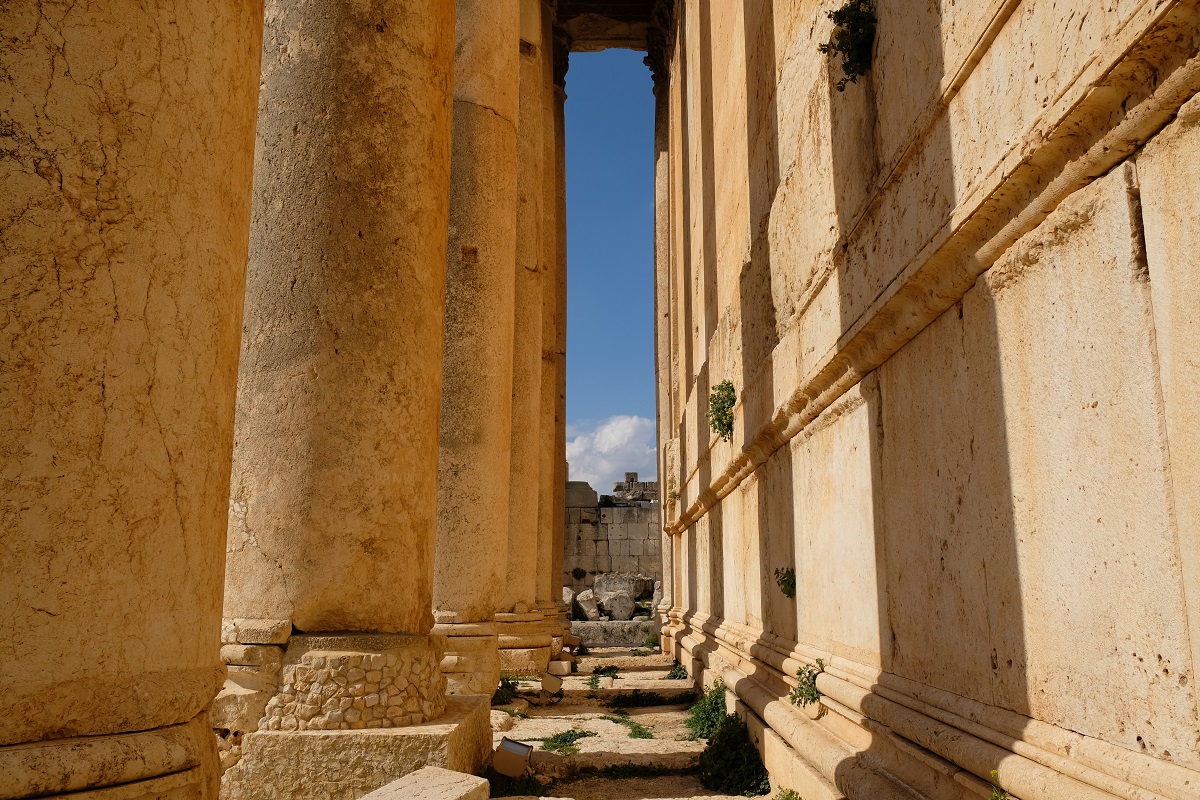
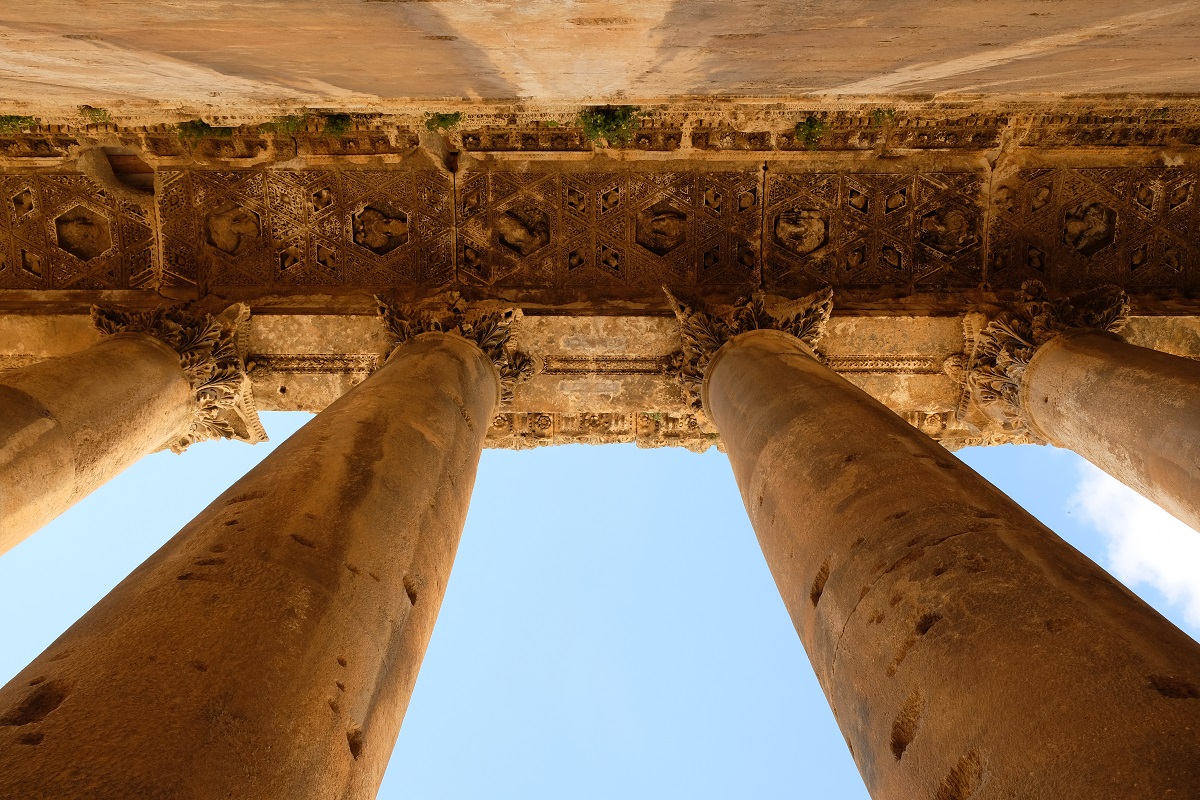
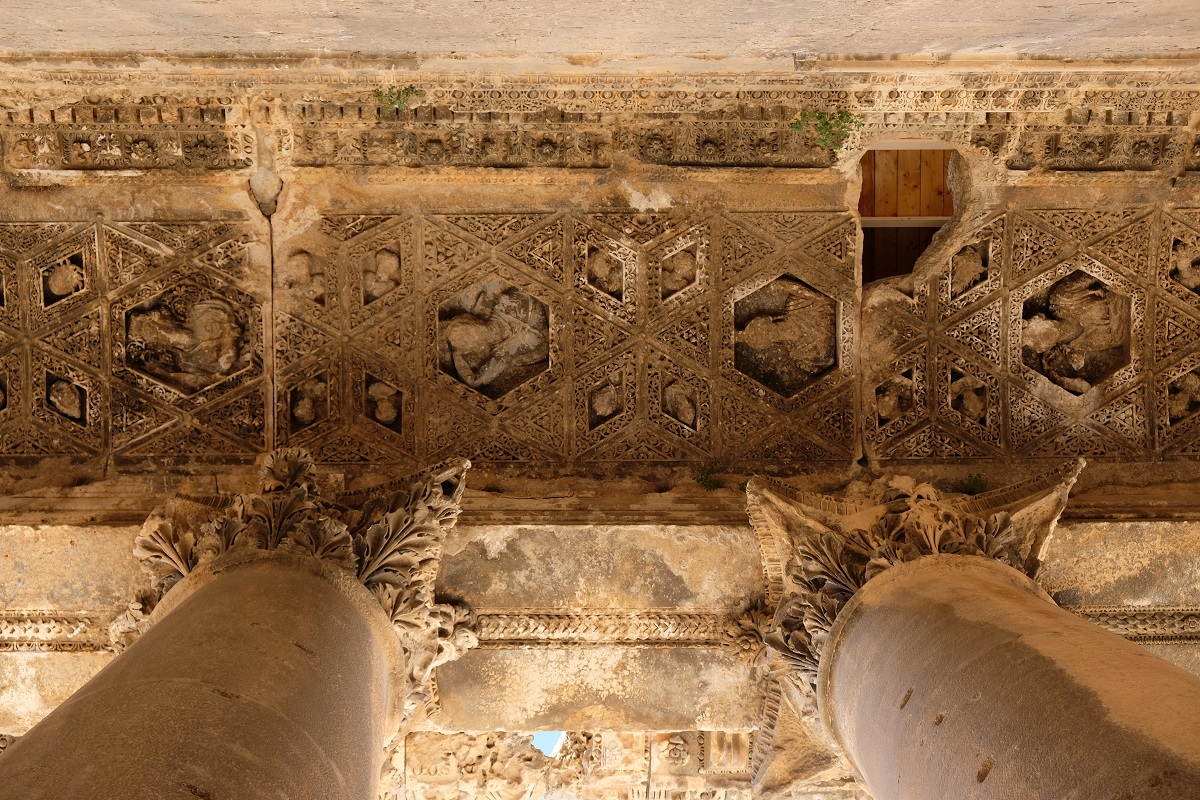
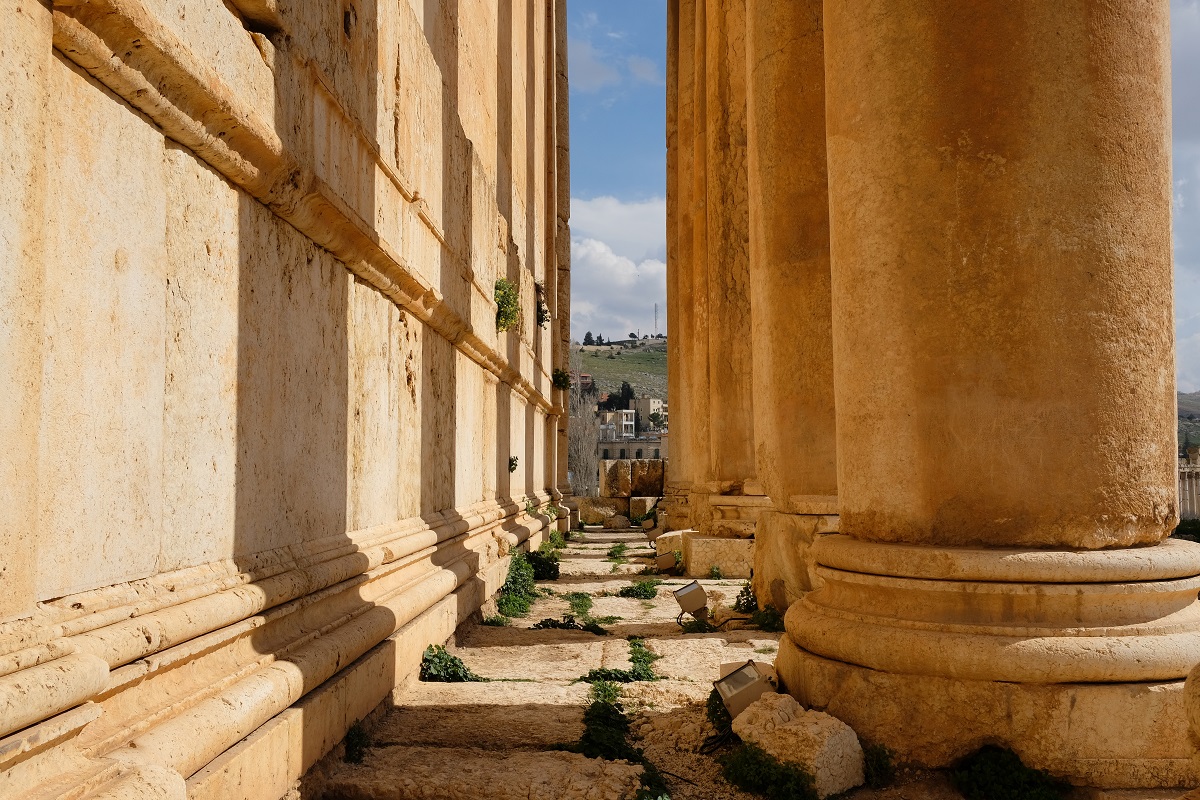
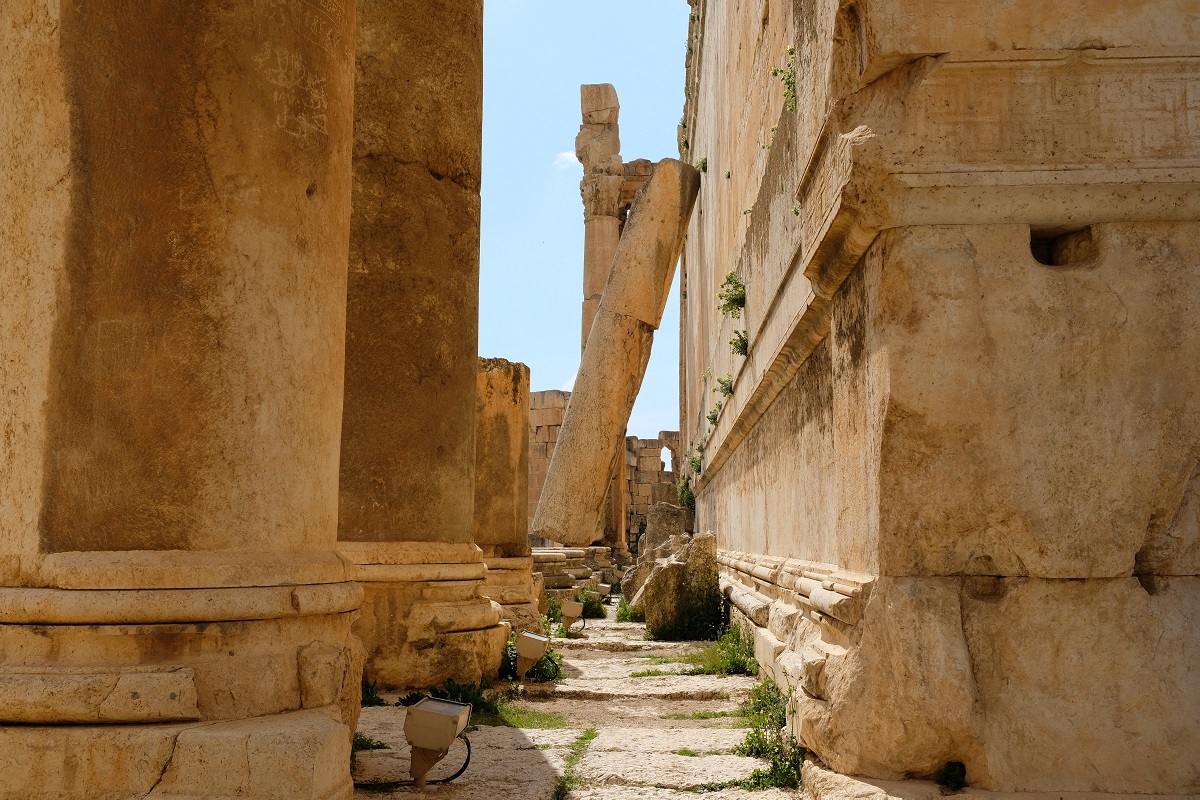
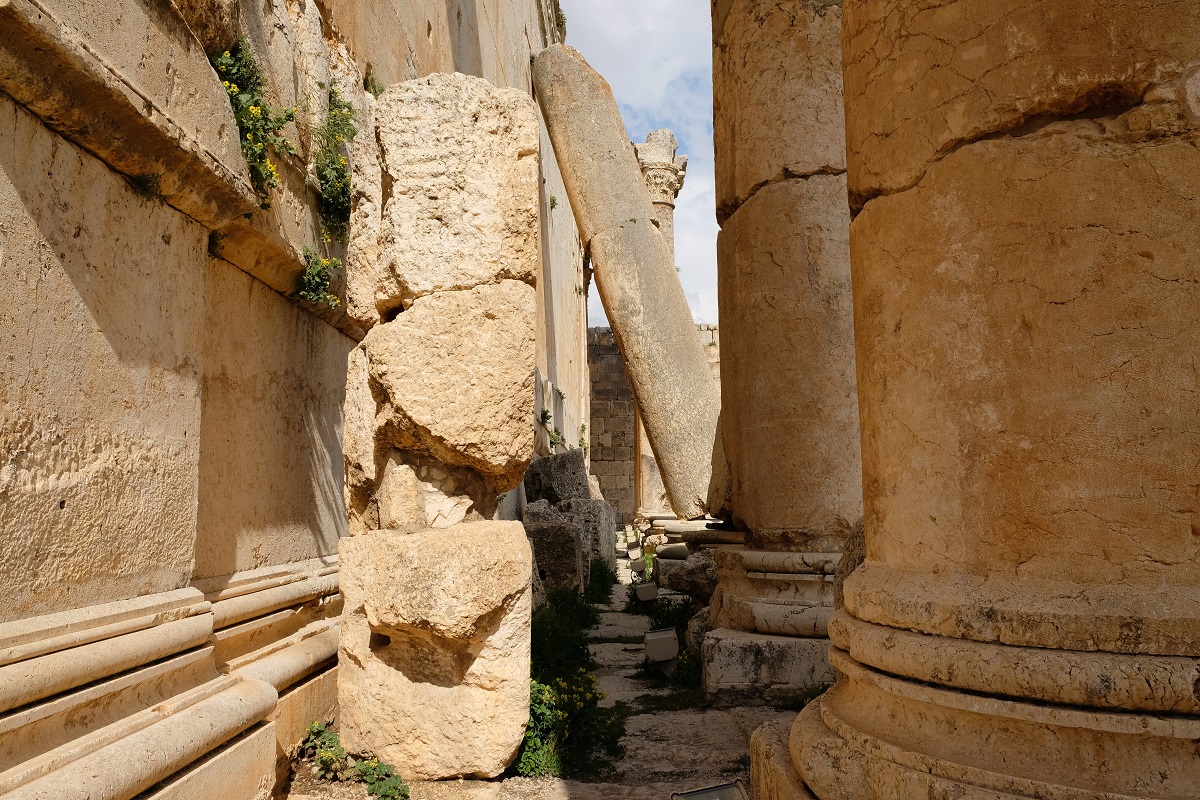
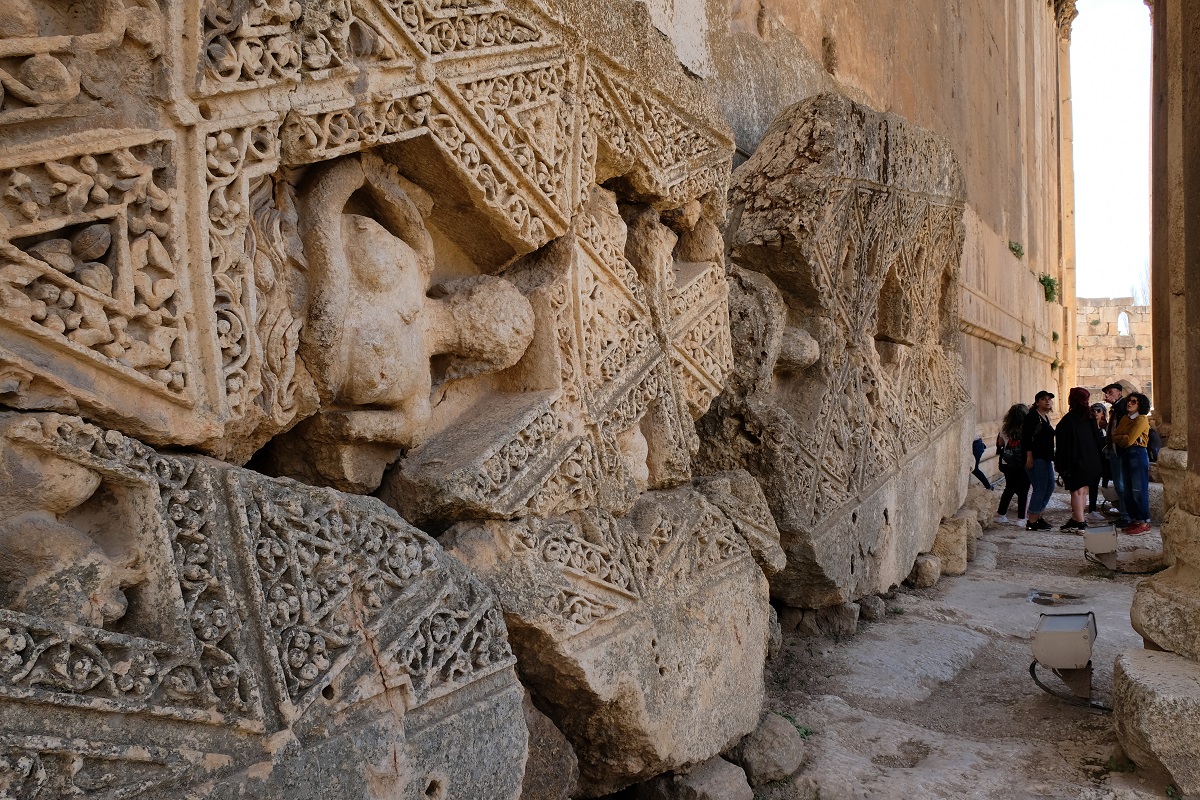

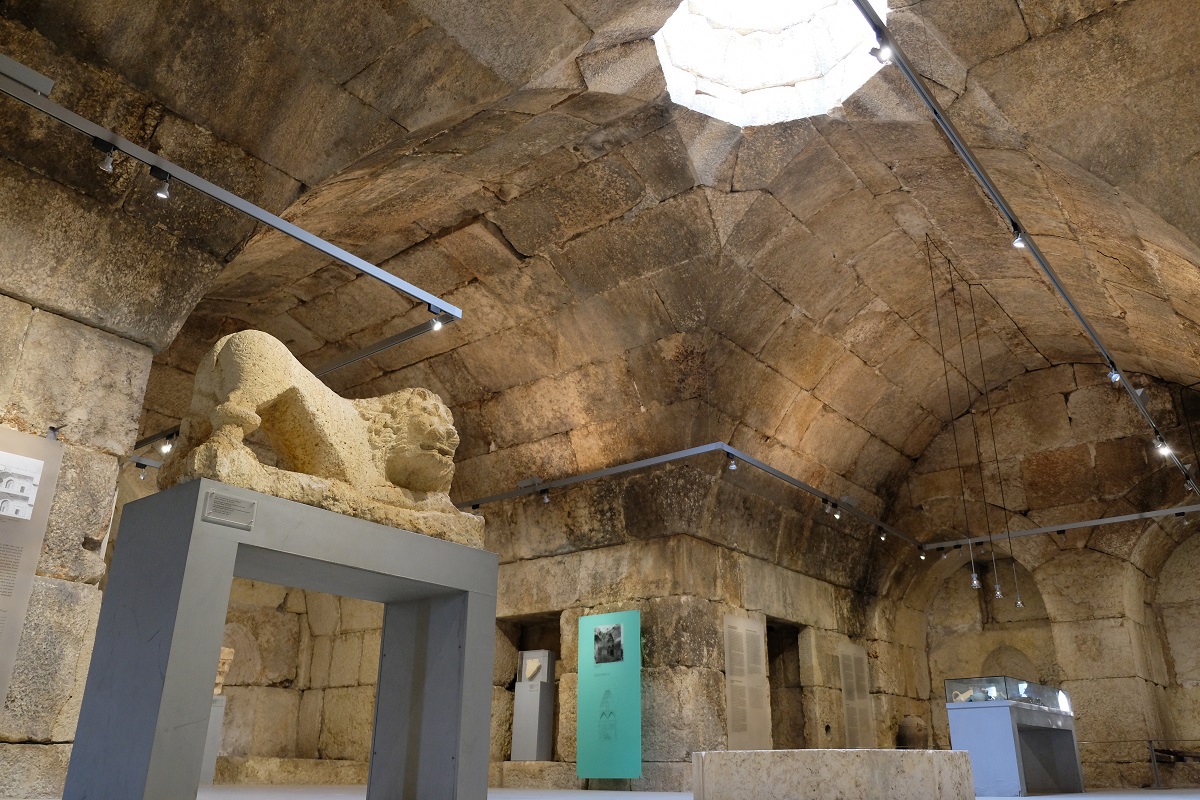
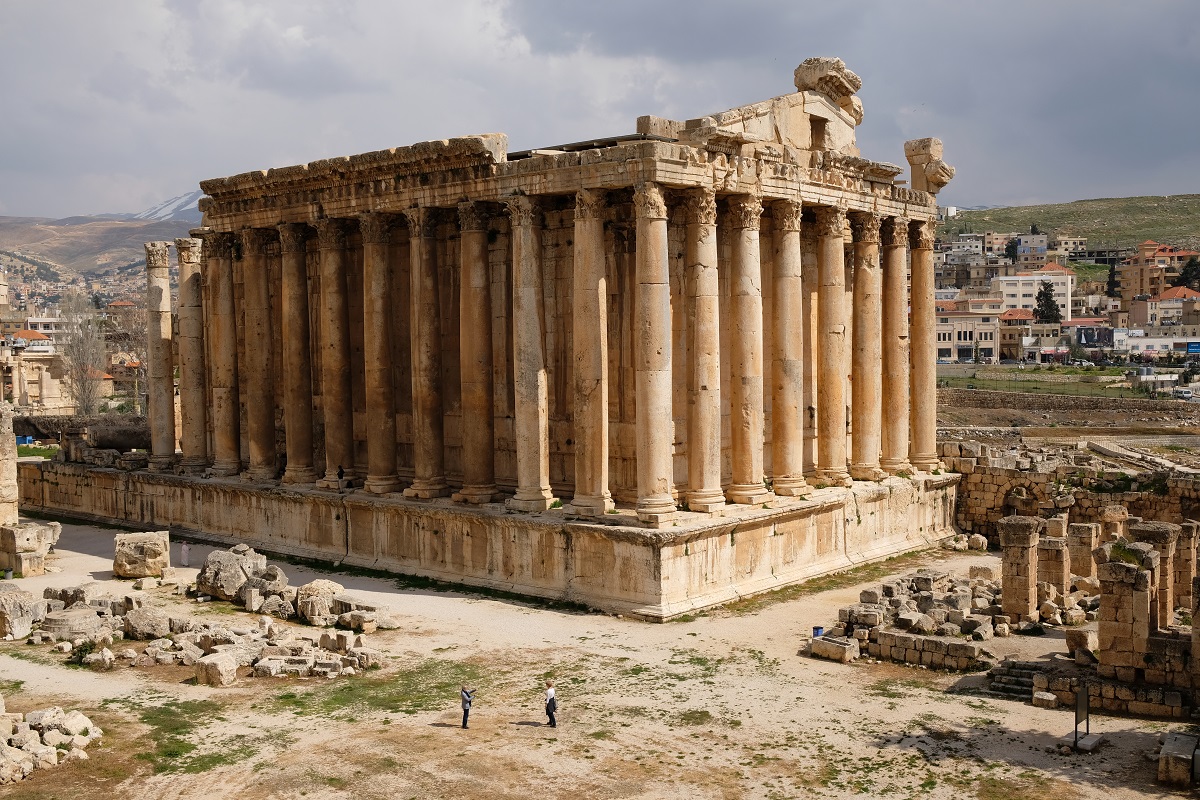
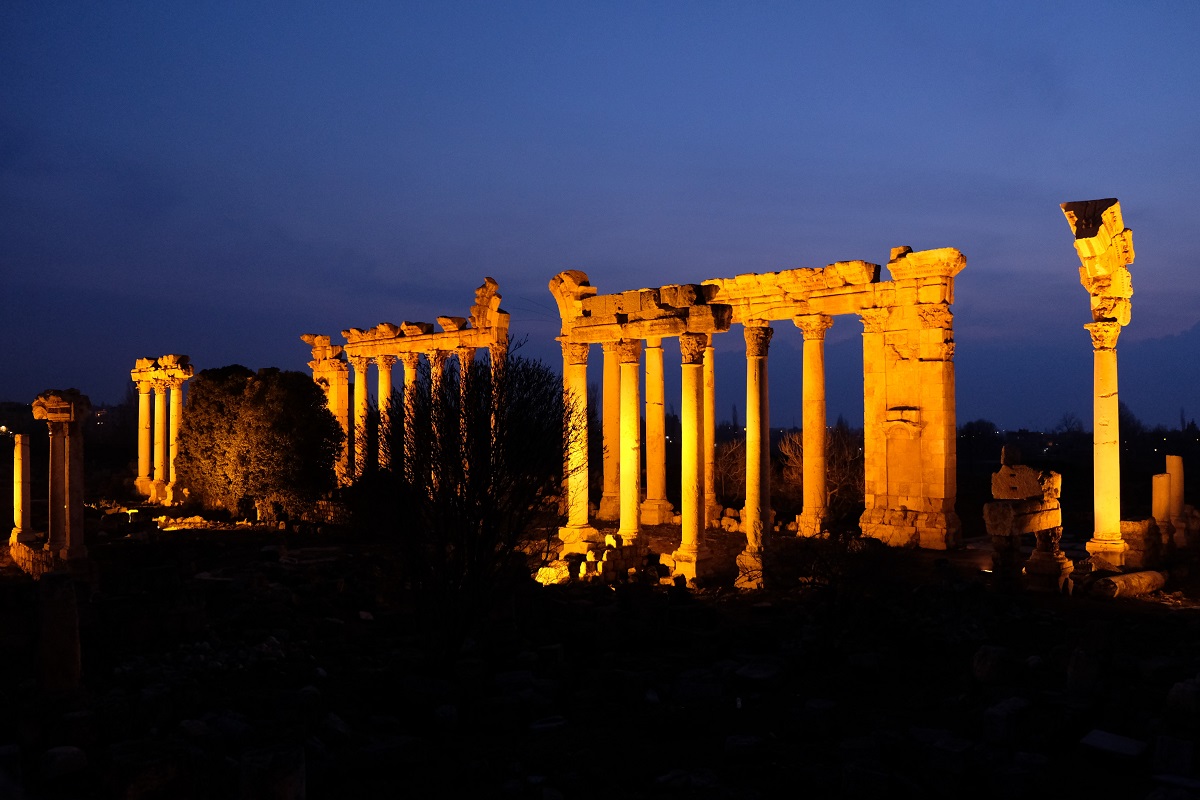
Bama the structure is astounding. You have done a marvellous job of capturing creative angles and giving perspective of the size.
When you speak about blackouts it hits home to me how fortunate we are in North America that such occurrences are very rare.
LikeLiked by 1 person
The massive Hindu-Buddhist temples in Indonesia were mostly built in the eighth and ninth centuries AD. And to think that the Temple of Bacchus predates them by several hundred years is truly mind-boggling. Fortunately the blackouts in Lebanon only marginally affected us, and coming from another developing country this kind of thing is not new to me.
LikeLiked by 1 person
I totally love the perspective and angles of your images, it truly gives it a different view of all the beauty of Baalbek. Thank you so much for sharing.
LikeLiked by 1 person
Much appreciated, Cornelia. I had so much fun taking photos of the detailed decorations of these temples, but it also made me realize that I need to buy new memory cards.
LikeLiked by 1 person
Amazingly well preserved. Looks so imposing even today, it must have been the talk of half the world two thousand years ago.
LikeLiked by 1 person
I believe so. The beauty of Baalbek must have been known in all the four corners of the Roman Empire, and beyond.
LikeLike
You have brought great perspectives of the monuments in ruin. They still have an aura of their heydays.
LikeLiked by 1 person
Going to places like this makes me wish that there was a time machine that allowed us to travel back to the moment when those ancient monuments had not been battered by the elements and wars.
LikeLike
The scale of those pillars are mind-boggling, while the relief details are just exquisite. No wonder you filled up so many memory cards, Bama. You must have had a sore neck at the end of the day! Your photographs make me feel like I am right there with you, craning my neck not to miss anything.
LikeLiked by 1 person
It was incredible how fast my memory cards filled up — in the end I had to delete some similar-looking photos to give a little bit of space for more shots. I’ve never been to any other Roman ruins, but I’m quite confident to say that the Temple of Bacchus will remain in my list of ancient world’s most stunning monuments.
LikeLiked by 1 person
Great post 🙂
LikeLiked by 1 person
Thank you!
LikeLike
No problem 🙂 check out my blog when you get the chance 😄
LikeLike
Such a marvellous temple! It’s immense in scale, yet so delicate in details. If you have already seen this place, it will be difficult for you to see any other Roman ruins 🙂
LikeLiked by 1 person
I know, right! I think I would still enjoy other Roman ruins, although the ones in Baalbek would certainly come into my mind from time to time.
LikeLiked by 1 person
beautiful pics. wish i could be there personally.
LikeLiked by 1 person
Thank you! I hope you’ll get the chance to visit Lebanon one day in the future and see the Temple of Bacchus, among other incredible places this small country has to offer.
LikeLike
I can see why you used up so many memory cards! I hadn’t realised the Roman temples in the Middle East were so impressive–your photos look like something out of Age of Empires.
The intricacy, proportions, layout and sheet size (which I only fully appreciated after seeing the second-last photo!) seem truly special, perhaps even more so than the temples I visited in Rome itself! The apparent(?) lack of tourists probably helps make it look even more appealing to my eye too.
LikeLiked by 1 person
I think Lebanon, Jordan and Syria have some of the most impressive Roman temples in the world, thanks to their strategic location in the ancient trade route.
You’re actually the second person who told me that even the temples in Rome are not as spectacular as the ones in Baalbek. I guess it helps me keep my expectations low when I visit the Italian capital one day. There are also amazing Roman ruins in places like Algeria, Tunisia and Libya, but it might take some time before I get the chance to visit those places.
LikeLike
Bama, this post totally amazes me. I had to call my husband over to take a look at your photos. I have seen many fantastic Roman ruins in my travels but the ones in Baalbek look even more incredible. You’ve moved Lebanon significantly higher on my travel list. It must have been extra special staying overnight versus a day trip.
LikeLiked by 1 person
Ha! I hope your husband would agree with you and move Lebanon higher on his travel list as well. When you do go to Baalbek one day, I recommend a stay at L’Annexe because it’s a really beautiful hotel and it’s just a short walk away from the ruins.
LikeLiked by 1 person
This is lovely
LikeLiked by 1 person
Thanks for reading!
LikeLike
The scale of the temple is humongous, especially when seen from the human perspective. It is astonishing how Romans were able to build such giant temples without machines. Do you have any information if this temple was destroyed by subsequent rulers once the Christian rule ended?
LikeLiked by 1 person
I’m glad I didn’t get a sore neck for looking up too often — those intricate decorations on the ceiling of the peristyle were amazing! What I read was that the destruction by some Christian and Muslim rulers was more evident on the Temple of Jupiter. Fortunately the Temple of Bacchus fared much better that its slightly bigger brother.
LikeLiked by 1 person
Good to hear this. 🙂
LikeLiked by 1 person
Bama, these may be your best architectural photos yet! Such a nice assortment of close-ups, upward shots into the sky, full-building views, and every other angle. I love the thick columns with little tufts of green on the ground nearby, and all the shots of the parts arching over your head give a great idea of the scale of these gorgeous structures. I’m going to sound like a broken record, but once again, that crumbling old stone just absorbs the sunlight and practically glows with warmth. Beautiful!
LikeLiked by 1 person
Thanks Lex! This is possible only because I took way too many photos of this incredible ancient temple, and you know how much I love ancient ruins! I don’t remember how many wows I said when I was visiting the Temple of Bacchus and the Temple of Jupiter, and there were moments when I briefly stopped taking photos just to marvel at these enormous structures. Old stones bathed in morning or afternoon light is one of the most beautiful things in life, indeed.
LikeLiked by 1 person
Absolutely loved the photographs! Really enjoyed this post too, but the photos are truly something else. Well done! I’m always in awe of what the Romans managed to build in their day..
LikeLiked by 1 person
Thank you! Visiting such grand ancient monuments always makes me wonder how those people who lived long before our time managed to build structures that even to modern standard are difficult to construct.
LikeLike
Politics aside, sounds like you had a good time exploring Baalbek in Lebanon. The Temple of Bacchus looks every bit magnificent standing strong with the stories of history embedded within it. Quite a marvel from your excellent photos (hope you didn’t run out of memory card space on your second day). It is interesting to hear how different symbols throughout time and culture are carved around it, and who Bacchus that it was dedicated to – making for intriguing stories for us to reflect on today. Looks like you stayed until blue hour. That last shot in the end is spectacular and it’s like the Temple of Bacchus is glowing 🙂
LikeLiked by 1 person
That was truly one of the best travel experiences in my life. At first I wasn’t sure how Baalbek and the Beqaa Valley in general would be largely due to its notoriety. But I was pleasantly surprised to find the people friendly, the food good, and of course, the ruins impressive. That museum underneath the Great Courtyard next to the Temple of Bacchus was world-class! I learned so many things about this ancient site thanks to its concise yet detailed information about the temples’ history.
LikeLiked by 1 person
Great post. Awesome photos. Reminds me a bit of the Acropolis in Athens.
LikeLiked by 1 person
Thanks John & Susan! Actually that first night of me staying in Baalbek, I looked up the photos of the Acropolis. Since 2004 Greece has become one of those countries I really want to visit — maybe sometime in the not-too-distant future.
LikeLike
What an extraordinary place! The photos are outstanding and the history immense.
LikeLiked by 1 person
If you were there, you would probably feel the same way like I did, Nicole. This temple is immense, and what makes it even more astounding is its incredible details.
LikeLike
Thank you for doing this work. Since I am old, I wouldn’t be able to go there anymore.
LikeLiked by 1 person
You’re very welcome, Adelheid. I’m glad you could at least travel vicariously through this post.
LikeLike
What an amazing structure inside and out. That monumental gateway with its detailed symbols of Jupiter, Mercury and Venus, not to mention the columns and the reliefs were astounding! What craftsmanship . I was completely unaware of Baalbek’s existence and history so was delighted to learn about it here.
LikeLiked by 1 person
That’s a perfect way to describe the Temple of Bacchus, Lisa — amazing inside and out. There’s only a handful of other ancient monuments I’ve been to that are on the same level of grandeur as this Roman site.
LikeLiked by 1 person
hey, You have no idea how happy this post made me ! I am from originally Lebanon , thank you for showing the word the beauty of my country !
LikeLiked by 1 person
You’re welcome. It really is my pleasure to share my travel stories from Lebanon for it is such an immensely beautiful country. I hope I’ll get the chance to return one day!
LikeLike
Great photos, but they are missing something – where are the huge crowds? 🙂 It is nice to be able to visit these less visited places and enjoy them without the tourist hordes. If this were in Egypt, it would be overrun.
Like Sue said, reading about the blackouts made me thankful I live in a place with consistent electricity. When I was in Alaska, we regularly lost power and it was a giant pain so I can only imagine how it must be in a big city.
LikeLiked by 1 person
Thanks, but the crowds were photoshopped. Just kidding! I guess today there are not many incredible places that offer such a tranquil ambiance like these ruins in Baalbek — I can imagine sites in other war-torn countries are even more deserted.
Speaking of blackout, last Sunday Jakarta (and some parts of Java) experienced a massive power outage, which was outrageous because such incident had happened almost two decades ago. When I arrived at the airport after a short trip to Yogyakarta I noticed the terminal was darker and quieter than usual. Then on my way home I noticed the traffic lights were off. It took more than eight hours for the power to return to my apartment. That and a powerful earthquake that shook Jakarta on Friday night made this past weekend quite an eventful one.
LikeLike
My God, how I want to visit it while it is still standing. But my wife is scared to go to Lebanon.
Thank you for the fantastic excursion, Mr. Guide!
LikeLiked by 1 person
Going to places like Lebanon certainly has its own risks, but compared to neighboring Syria the former is currently a lot safer. Hopefully one day you and your wife will get the chance to visit Baalbek. Thanks, Victor!
LikeLiked by 1 person
Spectacular! You are an amazing blogger and I love the pictures from your whole page. Jalan-jalan cari makan pun ada 😀
LikeLiked by 1 person
Thanks Lydia! Really appreciate your kind words. Jalan-jalan dan makan-makan memang dua hal yang saya suka. 🙂
LikeLike
I loved this post, Bama. Your photos really capture the scale and beauty of the archaeological site, and it was a privilege to be there without crowds of other tourists! It is remarkable that so much of the Temple of Bacchus remains standing after all these centuries despite the many periods of upheaval and conflict. Given the wanton destruction we’ve recently seen in places like Palmyra and Mosul and Bamiyan, I consider it a miracle that the entire complex survived the Lebanese Civil War seemingly unscathed – and was even declared a UNESCO World Heritage Site six years before the hostilities ended.
I think staying for two days there really paid off; we were so lucky to have periods of blue skies and sun on both visits to the ruins. I’d love to return during the Baalbek International Festival to enjoy a classical music concert at the Temple of Bacchus – just imagine how magical that must be!
LikeLiked by 1 person
The Temple of Bacchus was amazing! It was so grand and ornate, and to think that it was built almost two thousand years ago was really mind-blowing. At least now I know that I have to keep my expectations low whenever I visit a place with Roman ruins because Baalbek certainly has among the most impressive of such site in the world.
Speaking of Bamiyan, actually a few weeks before our trip to Lebanon I watched this documentary about this Afghan valley, and it made me wonder when the chance for me to see it myself will come. Security is essential, but hosting cultural events — like that festival in Baalbek — is equally important to reinvigorate the local economy and to slowly cure the wounds the prolonged war had inflicted upon the local residents.
LikeLiked by 1 person
Pingback: Jordan and A Travel Resolution Fulfilled | What an Amazing World!
Pingback: Along the Colonnaded Street of Jerash | What an Amazing World!
Your photos are mind blowing! I definitely want to go to Lebanon after experiencing Jordan and realising the Middle East isn’t some deep dark scary place! So much history in this region! Really love your blog Bama, so glad to have discovered it!
LikeLiked by 1 person
Much appreciated, Anna! That trip to Lebanon is definitely among the most unforgettable travel experiences I’ve ever had. However, due to the current circumstances in the country, you might want to monitor the developments closely if you are planning to go in the near future.
LikeLiked by 1 person
Thanks Bama. As a busy mum my chance of getting to this region again for a while is pretty slim! Next up will be a family holiday probably closer to home – thinking Singapore!
LikeLiked by 1 person
Singapore is also a convenient choice for Indonesians who want to go abroad but only have limited time. Hope you’ll have a great time in this island nation if you do go there!
LikeLiked by 1 person
Bama, these images of the Temple of Bacchus are spectacular — no wonder they easily consumed three memory cards. You have a great attention to detail, not only with your photos (I love the detail you’ve captured of the monumental gateway), but also with your written descriptions.
We’ve been fortunate to see a few Roman temples in Europe, but someday I hope we’ll be also able to visit some in North Africa and the Middle East. Their scale and lesser-visited nature make them even more appealing. How much time did you spend in Lebanon?
LikeLiked by 1 person
It was hard not to be captivated by those amazing details upon seeing them up close. If you love Roman ruins, you would certainly have a great time in Baalbek, Tricia. In total my friend and I spent about one week in Lebanon, and that was such an awe-inspiring trip — one of the most unforgettable travel experiences for me to date.
LikeLiked by 1 person
Indeed, we enjoy exploring Roman ruins — especially the sites that benefitted society (aqueducts vs. colosseums, for example).
And a week in Lebanon sounds wonderful. The country’s food is just another reason I’d love to visit.
LikeLiked by 1 person
Now that you mentioned the food, I had so many delicious local dishes throughout this trip.
LikeLiked by 1 person
Pingback: A Taste of the Levant: Lebanon | What an Amazing World!
A great post in the temple of the wine god with so many lovely details!
LikeLiked by 1 person
Thank you, Peter. This is really one of the most impressive ancient temples I’ve ever been to.
LikeLiked by 1 person